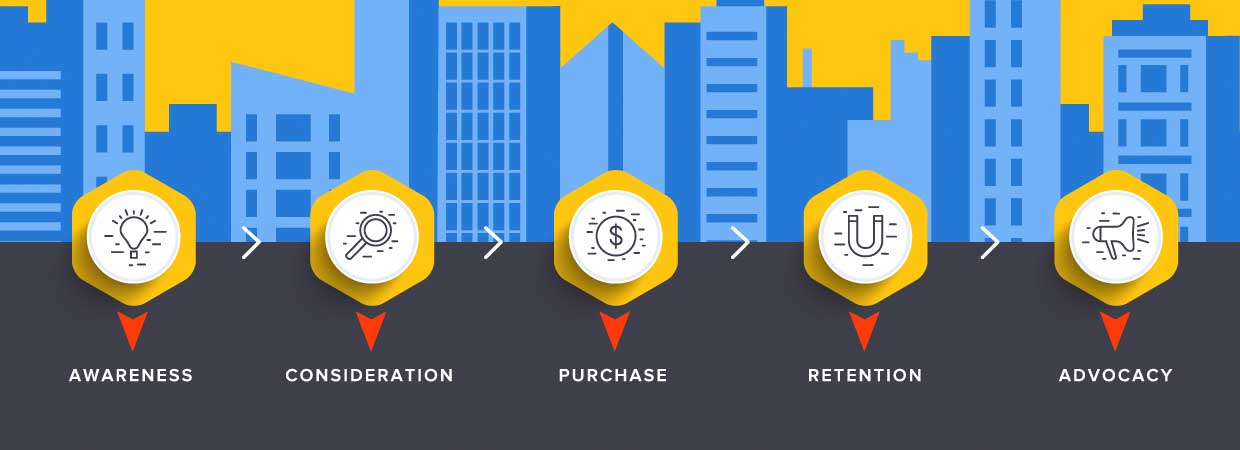
If you are reading this, then you probably are searching for a surefire methodology by which to attract, convert, and close new customers with your website.
Unfortunately, no matter how brilliant your product or service is; no matter how efficient your marketing team may be; no matter how flawless a business plan you have:
If you do not understand your potential customers’ desires, motivations, and thought processes; your business will not prove successful in a highly-competitive market.
Understanding a potential customer’s thoughts and desires is an incredibly difficult task. For many, just creating a buyer's persona can help identify those thoughts and desires.
Our design team believes that by focusing on the problem-solving processes and characteristics of your potential customers, you as the business owner will be able to connect with the people who most need the goods or services you offer.
We all know that outbound sales methods are inefficient, expensive, and unproductive, and it is for this reason: you are advertising to people who can’t even be considered potential customers, because they didn’t need your product so they did not seek your business out.
The question then becomes, how do you reach the people who are ready to purchase your product?
The answer is simple: You must think like your potential client in order to predict who they are and where they will most likely come across the product your business offers.
Understanding The Buyer’s Journey specific to your product or service is the key to successful marketing campaigns and is first step in breaking through to your target audience. Through this knowledge, you will be able to not only accurately find the right audience, but also how and where to best reach them.
The Buyer’s Journey
An industry-touted term, The Buyer’s Journey refers to a three-step process all customers go through when purchasing any kind of good or service.
By understanding this simple representation of the mental progression your potential customer goes through when buying a product, you will generate more lucrative leads and bolster the success of your business.
Awareness
The journey begins when your potential customer comes to some sort of realization.
Whether it be the desire to complete a goal or deal with one of life’s challenges, your potential buyer has experienced some sort of disturbance in their life, and they are looking to your business to fix it.
Once the buyer has identified the problem they are having, they will naturally prioritize fixing it.
Ask yourself these questions to understand the awareness stage:
1. What are the problems does your product alleviates?
2. Where do these people search for information on how to solve these problems?
3. How do they prioritize them?
Consideration
The second stage of the buyer’s journey is known as the Consideration stage. At this point in the journey, the buyer has decisively identified their problem and must now explore the avenues available for solving this problem.
For example: if a person comes to the realization that their floor is dirty, then they may look into buying a broom, vacuum, or steam mop in order to remedy the problem realized in the Awareness stage.
Each floor cleaning strategy has its own benefits and downfalls, and you had better believe your customers will do their homework before they go spending their money. These different options can be thought of as Solution Categories.
Ask yourself these questions to understand the Consideration stage of your buyers:
1. What kinds of other Solution Categories do your buyers consider when trying to solve the problem your product is meant for?
2. What are the pros and cons associated with each solution your buyer is considering?
3. How does your potential customer decide which good or service to purchase?
Decision
The Decision stage is the final step in the buyer’s journey. Now that your potential customer has identified a problem in their life and determined a list of Solution Categories, they must decide upon an appropriate action to take in order eliminate their issue.
The buyer from the Consideration stage has conducted significant research considering the floor and cleaning options. Their floors are wooden, and thus the pros of the steam mop Solution Category outweigh the cons.
Now the buyer must consult their sources once again in order to decide which make and model of steam mop is best suited for their personal use.
Ask yourself these questions to understand the Decision stage of your buyers:
1. What criteria do potential buyers use to determine which product is best for them?
2. When a customer does come across your product, what sets it apart from the rest?
3. How can you develop the trust necessary to convince the buyer that you are the best option?
And there you have it, whether deciding on buying a steam mop, new car, or anything else for that matter, consumers do an overwhelming amount of research to help them make an educated decision.
In order for your business to increase revenue, you need to position your website content around each of these stages in order to build a relationship with your potential customers, or nurture your leads. Then and only then will they be willing to trust and even make a purchase from you.
Consider the three stages of the buyer’s journey when building marketing content for your site in order to maximize the effective of your website.
© 2024 INBOUND DESIGN PARTNERS LLC. PRIVACY POLICY